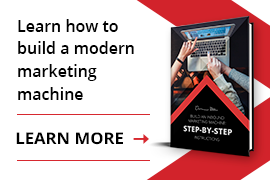
There’s a lot of talk out there about a brand’s “voice” and what it means.
In the simplest terms, your brand voice is an agreed collaboration among executives, writers, marketers, and others in your company to project a certain image. It determines what you discuss in your corporate messaging, the tone you have, and how you want your company to be perceived from the outside.
It sounds easy, but it’s tough to build from scratch. And even when you have one, it can be hard to keep it consistent. In one survey, only 48 percent of marketers believed that their leadership team, HR, corporate communication, and marketing departments all spoke with one unified brand voice.
Clearly, these companies haven’t put enough effort into establishing their brand!
Start By Taking Stock of Your Company
The first step to discovering your brand’s authentic voice is to take a long, hard look at your company.
-
What’s the point of your organization?
-
What are your brand’s values?
-
What pain points are you addressing in your market?
These essential questions determine who your target market is and how you should address them. Look at the purpose of your company, the problems you’re solving, and your company’s biggest values.
These foundational questions form the basis of your voice discovery process.
Think of Your Brand as a Person
With the basics on paper, move on to the next step: imagining what your brand would be like as a person. Given that you’re creating a “voice” for this corporate entity, this is a natural exercise.
-
What does this “person” enjoy? Does he/she like to share knowledge? Have fun? Improve the area around him/her?
-
What words would you use to describe this person to others? Bold? Irreverent? Conscientious?
-
How would this person answer questions posed by his/her market? With sincerity? How about levity?
This exercise helps you take the features you defined in step one and translate them into a persona. After all, your goal here is to personify your brand, and if you’re struggling to come up with a clear definition, it can help to put it in different terms.
For example, if you were to Google the topic of early retirement, you’ll see a few different takes on the idea. Forbes pushes its “5 Steps to Prep for A Better Retirement in your Sixties” while a more relaxed company like Nerdwallet goes for the click: “To Retire Early, Focus on Just One Thing”.
It’s subtle, but you can see the distinction. Forbes gives the impression of a straight-laced executive who’s all business, while Nerdwallet’s brand comes across as a younger and cooler financial professional—even though they’re essentially saying the same thing.
Select Three Key Definitions
From here, take your answers from above and come up with a few focused keywords you would use to describe your desired voice. For example:
-
Authoritative
-
Understanding
-
Clever
This exercise helps you synthesize the data from above into concrete personality traits you can apply to your writing.
In our example, “authoritative” could be demonstrated by taking a direct, confident approach to content. “Understanding” implies a softer edge and an empathetic ear. And of course, “clever” indicates that you’re not afraid to crack jokes once in a while.
The idea here is to look at what your brand is composed of and distill the elements into a theme that aligns with your company’s goals. This is the core aspect of what it means to define your brand’s voice.
However, it’s not the only aspect that factors in.
Incorporate Your Target Market
This is a key aspect of discovering your brand voice that, in our view, companies don’t put enough thought into: the market being spoken to.
In truth, your market’s needs will define your brand’s voice just as much as the exercises above.
Let’s consider a baby products company as a quick example. This particular company might prefer to brand itself as a tough, rugged provider of baby products that jokes around and doesn’t take itself too seriously. That’s all well and good, but it’s not hard to see how this persona might clash with the typical market for baby products—parents looking for simplicity, trustworthiness, and honesty.
This is an example of what might happen if a brand disregards its target market during its analysis of its brand voice. Every voice needs to be aligned to a specific audience—no matter what the brand is.
To accomplish this, we recommend creating personality profiles for your company.
What Are Personality Profiles?
Personality profiles are similar to buyer personas. They outline a target market’s demographics, goals, and pain points. Personality profiles take all the information a company has about a market and molds it into an idealized “profile” that represents a segment of the population.
This type of profile will contain valuable insights into your audience, depending on what data sources you pull from:
-
Demographic details
-
Work information, role in the company, and professional history
-
Most important values
-
Previous on-site behaviors or activities
-
Likes and dislikes
Armed with this data, you can look at your audience and segment them out by category. This will give you a basic framework on which you can address these markets. For example, a software house might find that its primary audience skews in two ways:
-
Established companies that have outgrown their current solutions, featuring multiple decision-makers and a rigid hierarchy. These executives prefer formality and undergo a long, formal buying process for all B2B transactions.
-
Startups just entering the space, usually with a single CEO making the decisions. This CEO skews younger, featuring an open nature that’s more accepting of off-the-wall solutions.
Based on this data, companies can create two distinct tones that align with each personality profile. This is an important framework for both voice clarity and consistency, especially as you market across multiple channels.
Find a Voice and Commit
The road to a great brand voice is one of self-discovery and trial and error. You might not get it right the first time, but that’s okay. What’s important is that you stick to the process and test the results over time. You’ll want to get feedback from your market on how well your voice resonates, but as long as you follow the above steps, you’ll be well on your way to a brand voice that’s effective at connecting with your audience.


